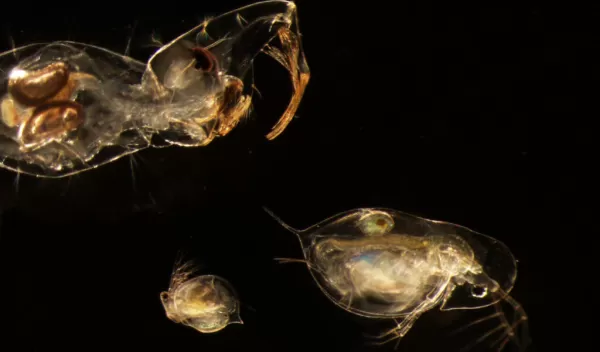
A healthy but depleted herd: Predators decrease prey disease levels and population size
Nature documentaries will tell you that lions, cheetahs, wolves and other top predators target the weakest or slowest animals and that this culling benefits prey herds, whether it's antelope in Africa or elk in Wyoming.
This idea has been widely accepted by biologists for many years and was formalized in 2003 as the healthy herds hypothesis. It proposes that predators can help prey populations by picking off the sick and injured and leaving healthy, strong animals to reproduce.
The healthy herds hypothesis has even been used to suggest that manipulating predator numbers to protect prey might be a useful conservation strategy. Even so, hard evidence supporting the hypothesis is scarce, and in recent years many of its assumptions and predictions have been questioned.
In a study published in the journal Ecology, a University of Michigan-led research team used a pint-sized predator-prey-parasite system inside 20-gallon water tanks to test the healthy herds hypothesis.
Their study system consisted of predatory fly larvae that feed on the water flea Daphnia dentifera, which hosts a virulent fungal parasite.
The researchers found that while high predation levels reduced parasitism in D. dentifera — providing partial support for the healthy herds hypothesis — populations of those poppy seed-sized crustaceans were dramatically reduced, as well. In some cases, D. dentifera populations were nearly wiped out by predation.
The U.S. National Science Foundation-supported findings may have implications for conservation efforts involving much larger animals, according to the study authors. The results suggest that caution is warranted when wildlife managers manipulate predator numbers in the hopes of promoting healthy herds of prey.
"The appeal of the healthy herds hypothesis lies in the alignment of multiple conservation goals — simultaneous conservation of predators, reduction of parasitism and protection of vulnerable populations — as well as the potential to reduce spillover risk to other populations, including humans," said aquatic and disease ecologist Meghan Duffy.
"But even when predators reduce disease in their prey populations, that does not necessarily lead to increased prey population size, as our study shows," said Duffy, senior author of the study.
Added Kari Segraves, a program director in NSF's Division of Environmental Biology, "This research highlights that even in an ecologically simple system, there are feedbacks that make the population dynamics wonderfully complex. In natural systems, the dynamics will likely be even more complicated, making it difficult to accurately predict outcomes in managed populations of wildlife."
